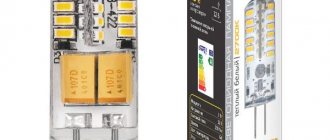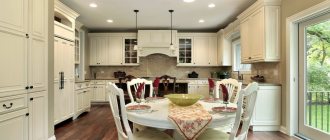Of the wide variety of lighting equipment, wall lamps are becoming very popular, firmly established near beds, tables, mirrors and other home furnishings. They allow you to create interesting effects and design solutions, replace the main lighting and act as decorative lighting. Due to the wide variety available, many people wonder how to choose a sconce, so in this article we will look at the main criteria that you should pay attention to when choosing.
Wall lamps and their varieties
The French word "bras" means "hand". Indeed: he extended his hand and the lamp was turned on! Sconces became especially popular in the 17th century, when lamps made of bronze, copper, and glass replaced candelabra. The advent of electricity became the impetus for the manufacture of sconces of various types.
Today the range of wall lamps is very wide. With their help, you can highlight significant objects in the interior, divide the room into zones, and increase the illumination of the room. In addition, original sconces can act as an independent decorative item.
Sconces are easy to install and maintain. They are conventionally divided into several types:
- Surface sconces. The lamp is structurally tightly pressed against the wall. Most often these are reflected light lamps. Such models are stylistically universal, varied in shape, color, texture and size.
- Wall sconces on a bracket. The models are varied in design and materials. Sometimes a group of lampshades are placed on one common base: this design looks very original and creates a good level of illumination. Such lamps look interesting in interiors of different styles. Sometimes sconces are made in the form of several lamps on a common base.
- Open lamps - sconces without a shade, are often imitation candles. Perfect for interiors in a classical, baroque or rococo style, for example, crystal wall sconces.
- Sconce with directional light and adjustable base. These models can be controlled by directing them to the desired location. Directional sconces are perfect for high-tech interiors. Very convenient near mirrors, in reading areas. An example of such a lamp is a base with a lampshade that rotates freely.
Some tips
Consider some features before purchasing and before installation, namely:
- If you have a low ceiling in the room, sconces with half shades directed upwards are good; they will make it visually higher.
- In the case of a high ceiling, the appliances are directed downwards, which makes it lower.
- When installing a lamp near the bed, the mounting height should be no more than 160 centimeters to make it convenient to turn the lamp on and off.
- And most importantly, the arrangement of lighting requires additional arrangement of electrical wiring, accordingly, plan its installation even before the start of repairs.
We recommend that you familiarize yourself with this year's new products, these are LED lamps.
How to choose a wall lamp?
To make a sconce a truly beautiful, appropriate and functional element of your interior, ask yourself a few questions:
- In which room do you want to place the sconce?
- What is the general style of this room and its dimensions?
- How many lighting fixtures are already in the room, what are they?
- How many windows are there in the room and where are they located?
- What is the original purpose of placing sconces: lighting or decor?
- what is the humidity level in the room?
The answers to the questions will determine the parameters of the lamp that will suit you: size, color, shape, material, number of light sources, power, degree of protection. Let's take a closer look at choosing sconces for each specific room.
Types of light direction
Depending on what function the sconces perform, the lampshade is selected. It is the lampshade that directs the light in one direction or another. Options for directing light into sconces:
- Diffuse, slightly upward light. As a rule, these lampshades are shaped like a ball or a candle and are located on a horn. This option is suitable for illuminating the entire room.
- The light is directed upward. This option is suitable to make the atmosphere of the room more solemn. A good way to illuminate the entire living room.
- The light is directed both up and down. A good option for highlighting separate areas in the living room. For example, this can be used to designate a corner with a sofa and armchairs.
- The light is directed strictly in a given direction, and the lampshade is mounted on a flexible horn. This option is suitable when using sconces for specific purposes: for reading, for eating in the dining area, for illuminating objects: paintings, mirrors or posters.
Thus, sconces easily help not only to decorate the interior, but also to make it more functional.
Wall lamp for bedroom and nursery
In bedrooms and children's rooms, lamps that provide soft, diffused light are appropriate. This lighting helps you relax and prepare for sleep. Models with thick lampshades and matte shades look great here. It is not recommended to place crystal and glass lamps in the nursery so that the child cannot be injured if the lamp breaks.
It is very convenient if the brightness of the lighting can be changed if desired, changing the chamber light to a brighter one that is more convenient for reading. In a child's bedroom, a weak wall-mounted night light can burn all night so that the child is not afraid to sleep. For night lights, it is good to use LED lamps as they consume less electricity.
Traditionally, sconces in the bedroom are placed at the head of the bed: one sconce on each side of a double bed, or one lamp on the side of a single bed. In the nursery, a lamp near the chair is convenient, where the child is read a fairy tale before bed. It is important that a person sitting in a chair can turn on the sconce without getting up.
A sconce in the bedroom will decorate and add functionality to the bedside area and create accents in the interior. Wall lamps are convenient because they do not take up space on the bedside table, leaving it for necessary things: books, a glass of milk and flowers.
What is a sconce, characteristic features of models for the bedroom
Among all the wall lighting options, the sconce stands out for its characteristic design feature - the socket is attached to a curved horn. From French “sconce” or “bras” is translated as “hand”. That is, the configuration of this lamp resembles a hand holding a torch or a candle. These lamps can have either a single horn or several “arms”.
Sconces are a modification of candle candelabra, which were gradually replaced by lamps. This type of lamps came into use back in the 17th century and has not lost its relevance to this day. Most often, sconces are used in bedrooms for their soft diffused light, comfortable for the eyes.
Wall lamps in the living room and office
In the living room and study, sconces set the rhythm of the interior and organize the space. A part of the room, highlighted by a pair of symmetrically placed sconces, acquires special meaning and integrity. As a rule, they try to highlight the area by the fireplace or other significant decorative elements, and focus attention on the bar counter. Sconces located on both sides of the sofa create a cozy relaxation area.
In the living room, sconces are most often placed solely for decorative purposes. An interesting composition is created by paired lamps above symmetrical pieces of furniture, sconces in wall niches, between windows.
Modern designers are increasingly using sconces to decorate living rooms, made in the same style, but with different color schemes. This approach refreshes the room and adds dynamics to it.
Sconces in the hallway and bathroom
For small rooms, often bathrooms and hallways, sconces can be the main source of light. But the traditional role of wall lamps is to illuminate the mirror and the most significant areas. Lamps whose design repeats some elements of the mirror frame look very impressive.
High humidity in the bathroom requires waterproof wall lights. Think about the combination of plumbing materials and fixtures.
You should not create too bright lighting in the hallway: a person enters this room after the street or entrance, and the light hitting the eyes can cause unpleasant sensations. If the corridor is long, its walls will be enlivened by a row of identical sconces.
Recommendations for selection
Wall lamps (as well as all others) must be of high build quality, because... they are installed in residential areas, often in close proximity to the head of a wooden bed. And if a short circuit suddenly occurs, the sleeping person will suffer - with a high degree of probability. Therefore, all connections must be well fitted and carefully insulated, especially if the lamp body is also made of wood. Wiring should not dangle or look flimsy. The starting point for selection is the declared cost. In cheap models, it happens that even the light bulbs are not included in the kit or the housing is not dismountable. Therefore, we advise you to avoid purchasing from unverified suppliers, and not to fall for offers with too low prices. You may run into an illiquid item, a fake, or even a disposable model that cannot be repaired.
The weight of the product also speaks volumes - good lamps are always heavy. This often means that high-quality components were used in their manufacture - metal and glass (and not cheap, painted plastic), a set of reliable wires - a cross-section corresponding to the loads, factory-assembled circuit boards, a porcelain socket, etc.
Pay attention to the compliance of the lamp consumption parameters with the network standards in your country. Sometimes you also have to buy special adapters or power supplies. For example, if the choice fell on an LED lamp, check whether it can work directly from a regular network. If wall lamps are equipped with a motion sensor, be sure to check which type is being used. Since ultrasonic sensors generate a high frequency sound that pets hear, and it is not pleasant for them. Microwave radiation is also extremely undesirable in rooms where people stay for a long time. Even if the model you like is not equipped with a motion sensor, you can install it separately.
Little tricks
- It is convenient to buy sconces and chandeliers from the same series: this guarantees high-quality multi-level lighting and saves time when selecting stylistically suitable lamps.
- Wall lamps help to zone a room. Use sconces installed symmetrically on the corresponding walls.
- The lower the lighting, the calmer and more romantic the lighting.
- A narrow space is visually expanded by a sequence of identical sconces. Such lamps should be compact enough so as not to create inconvenience. In a spacious and wide room, you can place sconces both on one and on opposite walls.
- Do not place the sconce directly in front of the TV, otherwise the screen will glare. Place the device at a distance of a few centimeters on each side (depending on the light spot of the lamp, usually 50 cm) from the projection of the screen onto the wall.
The right wall lamp can add coziness to any room. The options for using sconces in the interior are innumerable, and using the materials on our blog, you can try to apply your knowledge in lighting design. Subscribe and receive new articles directly to your email!
Lighting in the kitchen
Of course, it is best to use separate lighting for the kitchen work area. After all, cutting meat or cutting vegetables in semi-darkness is not only inconvenient, but also unsafe. One of the options for solving this problem has long been spotlights built into hanging kitchen cabinets. But if this is not possible, wall sconces will come in handy! It is enough to place a couple of such lamps at the edges of the work area, and you can cook without any problems even late in the evening. And a sconce above the dining table will also be useful and will create a soft romantic atmosphere.











